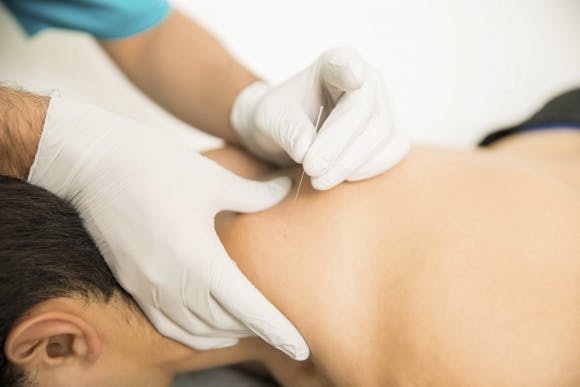You may have heard about an innovative treatment called Dry Needling. Dry needling is an evidence-based therapy technique that uses a thin acupuncture needle to stimulate muscle tissue and relieve muscle pain. It does not inject any medication. Relief of pain and muscle spasms as a part of a complete plan of care improves overall function. If you visit a physical therapist for a functional dry needling session, you may feel relief after only one visit.
Physical therapists use dry needling to help patients reduce pain so that they can return to physical activity. Specific dry needling techniques depend on the tissues being targeted and the overall objective of treatment. For instance, one of the most common objectives is relieving myofascial trigger points or hyperirritable spots that can limit function. How exactly does dry needling address trigger points? It inactivates them by provoking a local twitch response, or an involuntary reflex in which muscle fibers contract. Then, pain relief occurs on four levels: local pain, spinal pain through nerves, brain stem pain and higher brain center pain. Another approach, using a microcurrent with the needles, helps break up scar tissue to help improve range of motion.CONDITIONS helped by DRY NEEDLING
- Back Pain
- Sciatica
- Muscle Spasm
- Running Injuries
- Shin Splints
- Plantar Fasciitis
- Neck Pain
- Whiplash
- Headache
- Migraine
- TMJ
- Trigger Points
- Shoulder Pain
- Tennisa Elbow
- Carpal Tunnel
- Tendinitis
- Joint Stiffness
- Scar Tissue
Erik Strahan, DPT, ATC is CPT's Certified FDN Specialist
Jacob Fryoux, DPT, ATC is CPT's Certified FDN Specialist
Sarah Fryoux, DPT, ATC is CPT's Certified FDN Specialist

